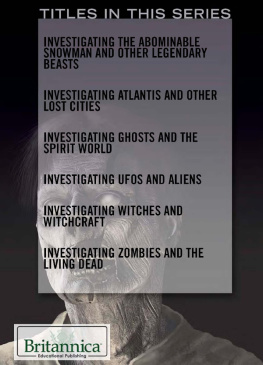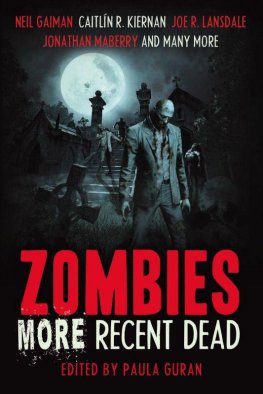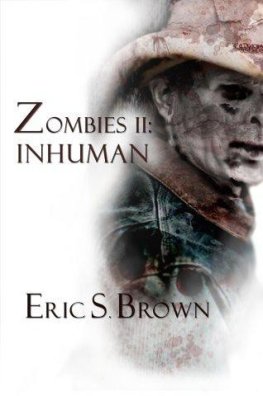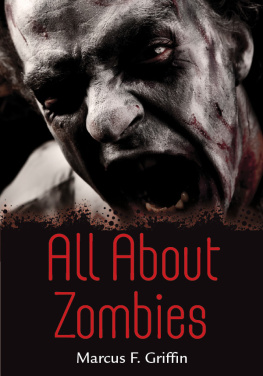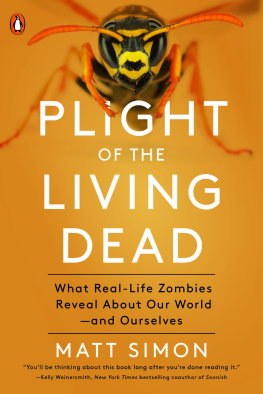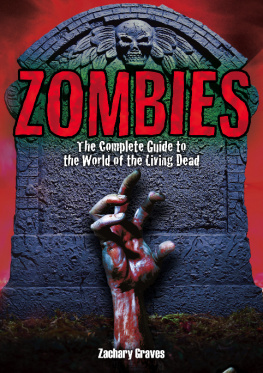
For Ronin Rohrback
Published in 2015 by Britannica Educational Publishing (a trademark of Encyclopdia Britannica, Inc.) in association with The Rosen Publishing Group, Inc.
29 East 21st Street, New York, NY 10010
Copyright 2015 The Rosen Publishing Group, Inc., and Encyclopdia Britannica, Inc. Encyclopdia Britannica, Britannica, and the Thistle logo are registered trademarks of Encyclopdia Britannica, Inc. All rights reserved.
Distributed exclusively by Rosen Publishing.
To see additional Britannica Educational Publishing titles, go to rosenpublishing.com.
First Edition
Britannica Educational Publishing
J. E. Luebering: Director, Core Reference Group
Anthony L. Green: Editor, Comptons by Britannica
Rosen Publishing
Hope Lourie Killcoyne: Executive Editor
Jacob R. Steinberg: Editor
Nelson S: Art Director
Michael Moy: Designer
Cindy Reiman: Photography Manager
Karen Huang: Photo Research
Cataloging-in-Publication Data
Kamberg, Mary-Lane, 1948
Investigating zombies and the living dead/Mary-Lane Kamberg.First Edition.
pages cm.(Understanding the paranormal)
Includes bibliographical references and index.
ISBN 978-1-6227-5876-0 (eBook)
1. Zombies. I. Title.
GR581.K36 2014
398.21dc23
2014026107
Photo credits: Cover, p. 1 Linda Bucklin/Shutterstock.com; p. 5 AMC/Courtesy Everett Collection; p 7 Entertainment Pictures/ZUMA Press; p. 9 Dieter Spears/E+/Getty Images; p. 11 Photos.com/Thinkstock; pp. 13, 19 Thony Belizaire/AFP/Getty Images; p. 14 BSIP/Universal Images Group/Getty Images; p. 16 Iberfoto/SuperStock; p. 18 Forum/Hulton Fine Art/Getty Images; p. 21 Entertainment Pictures/ZUMA Press; p. 22 Archive Photos/Moviepix/Getty Images; p. 25 Copyright Mireille Vautier/Alamy; p. 26 Fotosearch/Archive Photos/Getty Images; pp. 28-29 Jean-Claude Francolon/Gamma-Rapho/Getty Images; p. 30 Rick Madonik/Toronto Star/Getty Images; p. 31 Beth Swanson/Shutterstock.com; p. 34 MCA/Universal/Courtesy: Everett Collection; p. 35 Carley Margolis/FilmMagic/Getty Images; p. 37 Nemar74/Shutterstock.com; p. 39 CDC; p. 41 AP Images; interior pages background images iStockphoto.com/Kivilvim Pinar, iStockphoto.com/mitja2.
CONTENTS
I n Haitian folklore, they once lived as humans, died, and were buried. They were then brought forth from the grave to serve as slaves. Through powerful forces of witchcraft, their bodies remained preserved, carrying out the bidding of the sorcerer at whose hands they had been revived. They shuffled along, mindlessly working the sugarcane plantations of Haiti. They were zombies.
Later, Western popular culture turned zombies into superhuman, undead creatures. These walking dead raced through cities and the countryside in search of human brains to eat. While the zombie of Haitian folklore is subordinate to a master, these later, horror-filmfueled varieties obey only an overwhelming desire for human flesh. As they attack their victims, they create more of their kindthe living dead.
Zombies have become a frequent feature in works of horror fiction and film. In fact, the zombies of contemporary film were largely the innovation of American filmmaker George A. Romero. But the idea of the zombie has its roots in the folklore of Haiti. In the pages to come, we will explore the transformation of this fascinating figure from Haitian tradition into one of contemporary pop cultures favorite creatures.

Novelists and filmmakers built on the idea of the zombie in books, movies, and television shows, as in this scene from the AMC networks The Walking Dead.
I n a story about zombies, a man was believed to be dead, and so he was buried. Owing to witchcraft, radiation, or infection, however, his body was able to rise back up and leave the grave. He is not exactly dead, but he is not truly alive, either. He has joined the ranks of the undead. The man has become a zombie.
Zombies are fictional monsters featured in books, films, and video games. Their traits differ according to where they appear, but they all have their roots in Haitian folklore. According to Haitian legend, zombies are slaves with no minds of their own. Unlike their movie counterparts, however, the classic zombies of Haitian lore are typically not dangerous.

Zombies vary from wandering beings who shuffle their feet to bloodthirsty monsters with superhuman speed on the hunt for human brains to eat.
WHAT ARE ZOMBIES LIKE?
Authors, video game designers, and Hollywood moviemakers have added more and more elements to zombie behavior. In doing so, theyve also invented much of the danger that zombies are said to pose. The word zombie has been used for beings with varying characteristics, but they all share a few of the same traits.
Most important is a lack of free will. Zombies blindly obey either their masters or their own strong desire for such things as revenge, violence, or human flesh. In Haitian folklore, they perform manual labor and work the fields or even serve as bookkeepers or shop workers. In horror films and video games, they violently attack humans, typically lunging at defenseless victims to eat their brains. The sole purpose of zombies is to get whatever theyor their mastersdesire.
Any human can become a zombie, and in some stories, there are even zombie animals. (The 2006 New Zealand comedy-horror film Black Sheep features a flock of zombie sheep.) Some tales tell of magic spells that take the spirit of a human and revive it in a cow or a pig to be sold at the marketplace.
In addition to missing a life force, some pop culture representations of zombies are missing arms or legs, too. These limbs may have been used in sacrifices or in the making of magic potions. Oftentimes, their bodies are depicted as being covered in blood or with open wounds. While the zombies of Haitian tradition are said to be well preserved through magic, Hollywood zombies often have rotting bodies and give off a sickening smell.
The zombies of pop culture are strong. Despite this strength, they have trouble getting around. When they walk, they typically shuffle their feet in a slow, lazy movement called shambling. Only recently have movies and video games sometimes given them superhuman speed to match their strength.

Hollywood and pop culture have reimagined zombies as rotting creatures that are often missing limbs or large portions of skin. Furthermore they are depicted as aggressive creatures hungry for human flesh.
THE BIRTH OF THE UNDEAD
Early stories about zombies were told in Haiti, where African slaves practiced a religion called Vodou. Vodou is related to what is called Voodoo in the United States and Vodun in West Africa. Vodou is a religion that developed out of the spiritual beliefs of people of various African ethnic groups who were enslaved and brought to colonial Haiti. It also incorporated elements of Roman Catholicism spread by missionaries in the 16th and 17th centuries. The word Vodou means spirit or deity in the Fon language of Benin.

